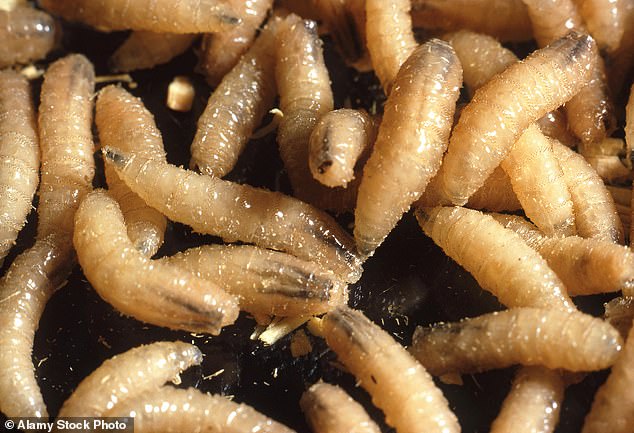A terrifying flesh-eating parasite that eats animals from the inside out is flooding the US border on livestock imported from Mexico.
The parasite, commonly called a New World screwworm, was eliminated in North America in the late 1800s but has returned as cattle from Panama are smuggled into the country.
The United States Department of Agriculture (USAD) was notified of the invasion last month after livestock were infected at the border, warning that the parasite could enter the country.
The screwworm larvae are creamy white in color and are deposited on the edge of superficial wounds.
When the eggs hatch, they usually enter the bloodstream through the open wound and will not only infect livestock but also work their way into humans.
Mexico’s Chief Veterinary Officer informed the US that it had found an infection in a cow in the southern Mexican state of Chiapas during an inspection near the border with Guatemala.
Because it is so difficult to identify screwworm infestations, it is very likely that infected livestock have entered the U.S. — although the USDA has not indicated how many may have been affected.
The USDA has asked livestock producers to monitor their livestock and pets to stop the spread of screwworm and to report any cases immediately.
Screwworm larvae (pictured) are placed around the edges of superficial wounds and burrow their way into the skin of livestock and humans
U.S. Chief Veterinary Officer Dr. Rosemary Sifford said that “given the northward movement of NWS, APHIS has increased its efforts in Central America in recent months to work with affected countries to eradicate this pest from newly affected areas.” expel.
“With this latest discovery in Mexico, we will further intensify this work to protect American agriculture and restore the barrier in Central America.”
The US, Mexico and Central America paid a combined $800 million to eradicate the screwworm more than three decades ago, but the illegal livestock trade has caused a resurgence.
Screwworms typically travel no more than a few miles, but the illegal trade in infected livestock has forced the parasite to spread 700 miles from the southern border of North America to the Pacific coast of Central America.
The infection originated in Nicaragua and traveled through Honduras and Guatemala before spreading to Mexican livestock.
The disease reached Mexico in just two and a half months and likely spread among U.S. livestock and pets, said Jeremy Radachowsky, Mesoamerica regional director for the Wildlife Conservation Society.
“There is evidence that directly links the illegal livestock trade to the resurgence of the screwworm,” Radachowsky says.
‘By bypassing sanitary controls, often in stressed, malnourished and injured livestock, livestock smuggling creates ideal conditions for cross-border transmission of diseases including brucellosis, tuberculosis and parasites such as screwworm.’

The US has temporarily blocked livestock imports from Mexico after a flesh-eating parasite was discovered on livestock shipped to the country.
The Association for Nature Conservation (WCS) warned that if screwworm infestation continues to spread, it could “cause catastrophic economic losses, devastate rural economies and create a public health crisis.”
If the parasite is not eradicated quickly, it could take decades to completely remove the parasite, likely costing U.S. taxpayers billions of dollars, WCS said.
The disruption to the cattle trade will have a costly impact, with inbound beef exports last year generating a $3 billion profit for the US alone.
As of November 21, 2024, the number of cattle imported from Mexico to the U.S. exceeded 1.2 million – up from just over a million last year.
In the wake of the contamination, Mexican authorities have said they are taking drastic measures to prevent further spread, including treating wounds in livestock, deworming livestock and implementing larvicide baths.
These baths are applied via a spray that is used to kill the screwworm larvae before it can turn into a full-fledged parasite.
Mexico has also introduced additional inspection stations throughout the country, such as the one in Chiapas where the first plague was discovered.
The WCS warned that “only bold, coordinated international action can protect biodiversity, save billions in government spending and livestock losses, and prevent a crisis from spiraling out of control.”

